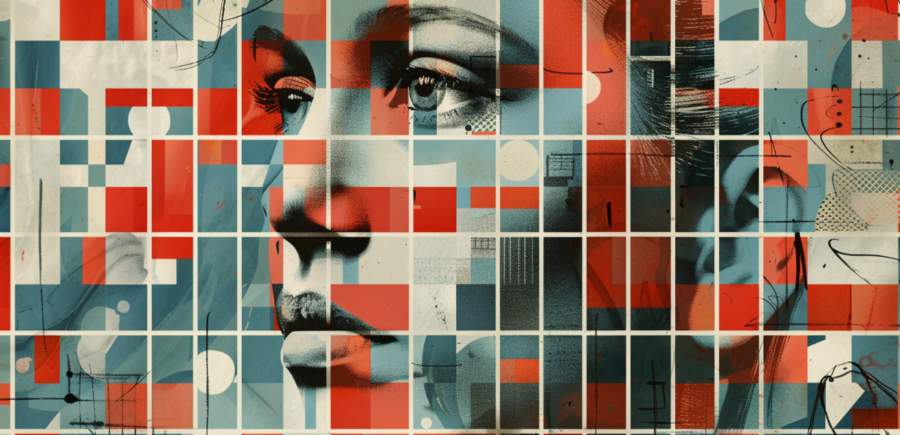And yet, people still buy from people. Especially in B2B. The handshake might now be virtual, but the instinct to assess trustworthiness from a face is still hardwired into every buyer’s decision-making cortex. Which is why quality team portraits aren’t just a nice-to-have—they’re quietly doing a lot of heavy lifting in your sales pipeline.
Whether you’re selling cloud infrastructure or consultancy services, how your team looks on your website matters. It’s not vanity. It’s psychology. And yes, there’s a measurable return on doing it right.
Faces Are Faster Than Words
Within 100 milliseconds of seeing a face, your brain has already made judgments about trust, competence, and likability. That’s not poetic—it’s neuroscience. Researchers at Princeton found that these snap assessments happen automatically and are hard to override.So what happens when your team photos are blurry, mismatched, or just plain weird? Visitors don’t consciously think “this company looks disjointed and untrustworthy.” But they feel it. They bounce faster. They hesitate to book the demo. And if the competition has clean, cohesive headshots that radiate professionalism and warmth? You’ve already lost ground.
Trust Starts on the About Page
Your About or Team page is usually the second or third page a potential client visits after landing on your site. It’s where they go to confirm whether you’re real or just three initials and a chatbot.Well-shot portraits of your actual team create immediate credibility. Especially in industries where the stakes are high—legal, finance, B2B tech—buyers want to know *who* they’re about to give money, data, or legal responsibility to. A professional image says: “We exist. We know what we’re doing. We didn’t crop this in MS Paint.”
What Good Headshots Actually Communicate
This isn’t about everyone smiling the same way against the same wall like it’s picture day at accounting camp. Done right, business portraits communicate more than “we clean up nice.”Good photography helps convey brand tone through human presence. Is your company more warm-and-personal or crisp-and-executive? Are your services creative and agile, or structured and precise? Lighting, angle, wardrobe, and expression all feed into those subtle brand signals.
The best portraits don’t just capture people—they reflect purpose. They say, “We’re not here to waste your time. But yes, we’re also people. With faces.”
Aesthetics Meet Analytics
Still think it’s just about “looking nice”? One UK-based SaaS company swapped their placeholder staff avatars for real team photos and saw a 17% increase in demo bookings within a month. Why? Visitors spent longer on the Team page, clicked into bios, and felt more connected before ever speaking to a rep.Another example: a consulting firm updated their About page with new headshots and saw their average time-on-page jump by over 30 seconds. That’s not just because people like looking at faces—it’s because those faces were telling a story the brand copy alone couldn’t.
How to Avoid the Wall of Uneven Heads
Consistency matters. The fastest way to make your team page look like a lineup of unrelated freelancers is to mix lighting styles, framing, and background colors. It screams “we took these over five years, in three different offices, using four phones and one toaster.”If your team is spread out geographically, standardize the look with clear creative direction: same crop, similar background tone, same lighting setup. Better yet, fly in your photographer or pay for coordinated regional sessions. It’s less expensive than the trust you’re bleeding with disjointed visuals.
Don’t Aim for Glamour, Aim for Confidence
Nobody trusts a headshot that looks like it belongs on a dating profile from 2017. And nobody wants to do business with someone who appears to have just smelled a weird sandwich.The goal isn’t glamour or theatrical emotion—it’s clarity, confidence, and coherence. A good photographer will guide subjects into that space between too stiff and too casual, where people actually look like themselves—just slightly better lit and less confused than usual.
Skip the airbrushing. Keep the wrinkles. Make people look like who they are, not like a stock image of “Business Person #4, smiling ambiguously near laptop.”
When the Camera Pays for Itself
Great portraits are reusable across pitch decks, LinkedIn profiles, conference bios, PR mentions, and internal culture pieces. You’re not just buying photos; you’re buying strategic visual assets that humanize your team and reinforce brand trust again and again.And since B2B deals often involve higher price tags, longer timelines, and more risk, trust becomes even more critical. The faster a potential client feels like they “know” your team—even if it’s only through a digital photo—the faster they move toward signing.
Face Value, Real Value
You don’t need portraits that win awards. You need portraits that work. That say, “We’re competent. We’re reliable. And we’re not afraid to show up.”Professional team photos are not a cosmetic detail—they’re part of the trust equation. In a space where deals are made on spreadsheets, strategy decks, and handshake calls, a clear, confident face can be the thing that tilts the decision.
So don’t hide behind abstract icons and vague slogans. Show your face. Your clients are human. You should look like one, too.
Article kindly provided by georgiegreenephotography.com

